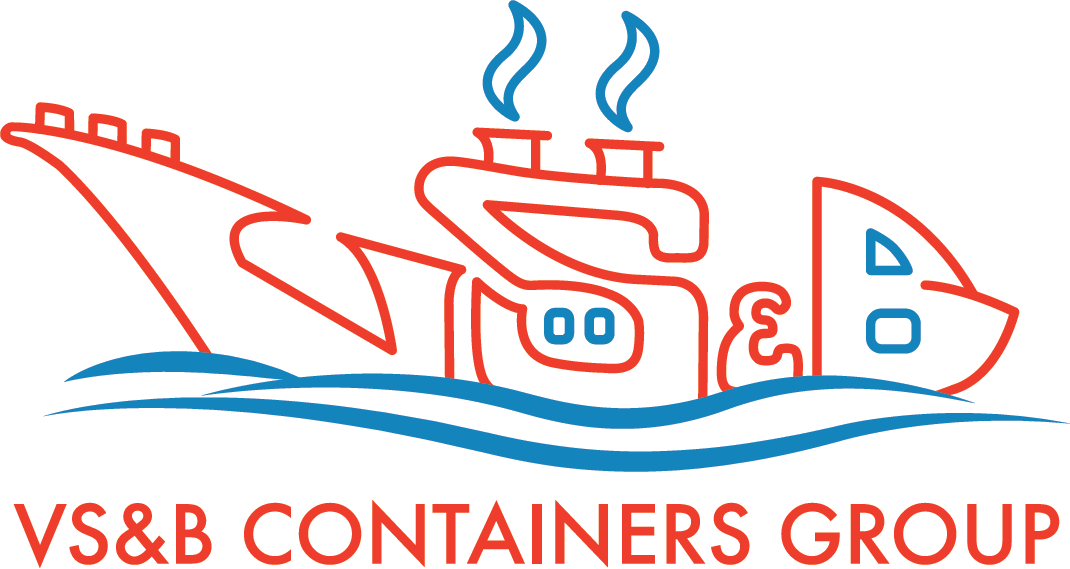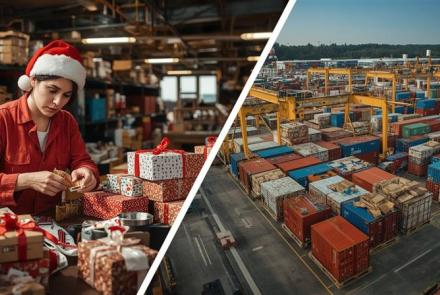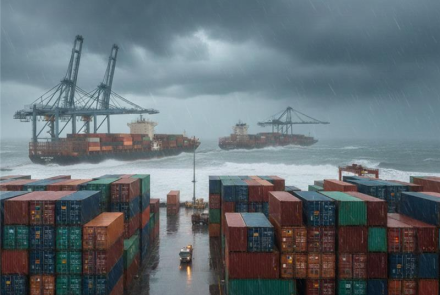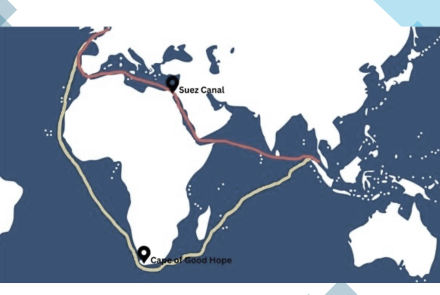Understanding Different Types of Cargo Vessels: Matching Ships to Shipments
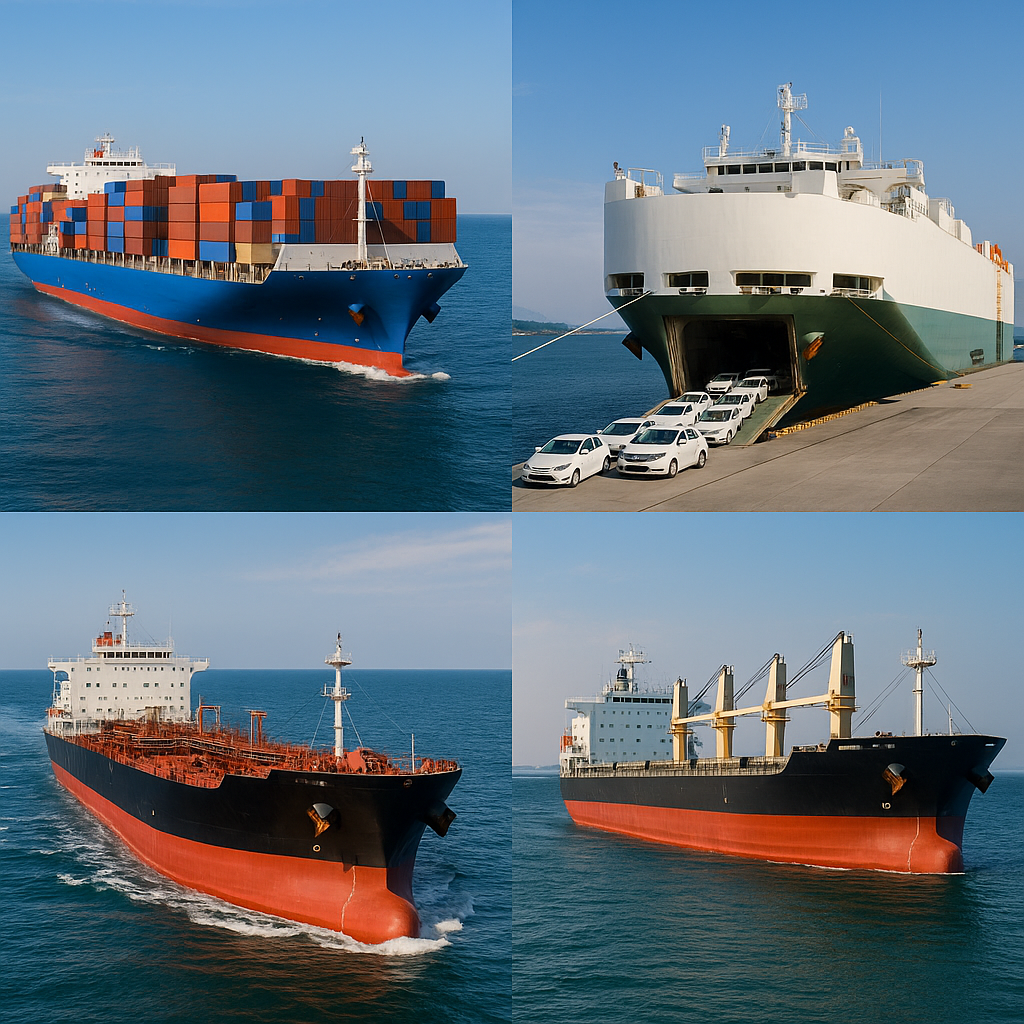
In the vast world of maritime logistics, not all vessels are built the same. From carrying liquid fuels to heavy machinery, each vessel type is designed to serve a specific purpose and cargo category. Understanding these vessel types helps shippers, freight forwarders, and logistics providers choose the most efficient and cost-effective way to move goods across the world.
Let’s explore the main types of cargo vessels and the kinds of cargo they typically carry.
1. Container Ships – The Backbone of Global Trade
Container ships carry standardized ISO containers (20ft, 40ft, and specialised units), which makes intermodal transport seamless across sea, road, and rail. Containerised shipping is the dominant method for finished consumer goods, electronics, garments, and many manufactured parts. Container ships are commonly grouped by TEU capacity — from small feeder vessels to massive ultra-large container vessels (ULCVs).
Cargo carried: Consumer goods, electronics, textiles, machinery parts, and other containerized cargo.
2. Bulk Carriers – For Loose and Unpackaged Cargo
Bulk carriers transport large quantities of unpackaged dry goods in bulk form. Their wide holds and simple cargo spaces allow efficient loading and discharging of heavy materials. Sub-classes (Handysize, Supramax/Handymax, Panamax, Capesize, VLOC) determine port access and cargo size limits.
Cargo carried: Iron ore, coal, grains, cement, fertilizers, and bauxite.
3. Tankers – Moving the World’s Liquids
Tankers are specialised for liquid cargo and are built with cargo tanks and safety systems to handle crude oil, refined products, chemicals, or liquefied gases (LNG/LPG). Tanker types include crude oil tankers, product/parcel tankers, chemical tankers and gas carriers — each designed for the specifics of the liquid they carry and the safety/regulatory requirements involved.
Cargo carried: Crude oil, diesel, chemicals, edible oils, LNG, LPG, and refined petroleum products.
4. Ro-Ro Vessels – Roll-On/Roll-Off for Vehicles
Ro-Ro (Roll-on/Roll-off) vessels allow wheeled cargo to drive on and off the ship via ramps, which speeds up port operations and reduces the need for crane handling. They’re central to the automotive global supply chain and to movement of heavy road machinery.
Cargo carried: Cars, trucks, buses, trailers, construction equipment, and wheeled machinery.
5. General Cargo & Multipurpose Vessels
Multipurpose and general cargo ships carry a mix of non-containerized goods — often project cargo or items requiring special stowage. These vessels commonly have onboard cranes and adjustable decks, enabling handling of items at ports without extensive infrastructure.
Cargo carried: Steel coils, timber, machinery, project cargo, and mixed break-bulk loads.
6. Reefer Cargo — Reefers vs Dedicated Reefer Ships (Clarified)
Most refrigerated cargo today is moved in refrigerated containers (reefer containers) on container ships - this is the dominant flow for perishables. Dedicated refrigerated (reefer) vessels still exist and are used on some dedicated trades or specialized routes, but they are less common than containerised reefers.
Cargo carried: Fresh fruits, vegetables, meat, seafood, dairy, and temperature-sensitive pharmaceuticals.
7. Heavy-Lift & Specialized Vessels
When cargo is oversized or extremely heavy (e.g., offshore modules, wind turbine components, bridge sections), heavy-lift vessels or semi-submersible transporters are used. These ships have high-capacity cranes or submersible decks to handle and secure such project cargo safely.
Cargo carried: Oil rig modules, large industrial machinery, locomotives, and wind-farm components.
Choosing the Right Vessel for Your Cargo
Selecting the correct vessel depends on cargo nature, volume, route, and port infrastructure. Containerised cargo moves best on container ships; dry bulk and liquids require bulkers and tankers, respectively. Also consider vessel size vs port capability - a ULCV may save per-TEU cost but needs deepwater berths and large cranes. Use approximate size ranges rather than rigid TEU cutoffs because ship sizes continue to grow.
Each vessel type plays a distinct role in global trade. By matching cargo characteristics to vessel design - and by being mindful of port access and handling needs - shippers can ensure safer, faster, and more economical cargo movement.
At VS&B Containers, we help clients choose the best container solutions for their cargo, ensuring compliance with global standards and optimizing supply-chain efficiency.
VS&B Containers group offers both standard and custom-made containers, delivered directly from the factory to your desired location. With a fleet of over 25,000 containers made available across Asia, Europe, US and Australia, the company helps customers get containers effortlessly from anywhere in the world. If you have unique needs in terms of affordability, adaptability, and potential return on investment, please drop an email to traders@vsnb.com, and the VS&B team will contact you to discuss further.
- Log in to post comments
